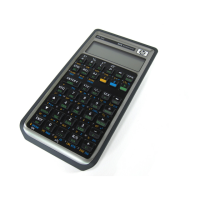2. SENDR will send the registers 00 to 99. The receiver will display after suc-
cessful termination.
3. SENDA will send the complete 2 KB of non-volatile memory. The receiver will display
after successful termination.
4. SENDL n will send a library region directly. It will arrive in RAM and may be stored using
PSTO.
The commands for sending and receiving feature a fixed timeout of some 10 seconds for setting
up the connection. After an interval of inactivity of said length, is displayed indi-
cating no communication has occurred. If appears in the middle of a transmis-
sion try again.
On a device without the crystal installed, you may get said error because of the baud rate
setting may be a bit too far off. To determine the speed, use the loop
and let it run for 30 seconds. The expected result at nominal speed is around 191000.
The I/O commands accept a correction factor in percent in X. Try with 95 if your device is
a bit too slow or 105 if it is a bit too fast. Values between 80 and 120 are accepted all
other are ignored. On the emulator or with the crystal installed, x is ignored.
The little "=" annunciator is lit while the serial port is in use. can be used to abort the
communication.
More Keyboard Commands Employing ON
+ or : Adjust display contrast.
+ : Tells the system a quartz crystal is installed for the real time clock. The
quartz is inevitable prerequisite for the clock being useful in medium to long
range (see TICKS). Its installation is a hardware modification described
elsewhere.
ATTENTION: If this command is entered though the hardware does
not contain said modification, the system will hang and can only be
brought back to live with a reset or a battery pull!
+ : Enters debugging mode (use at your own risk).
+ : Toggles the radix mark as does.

